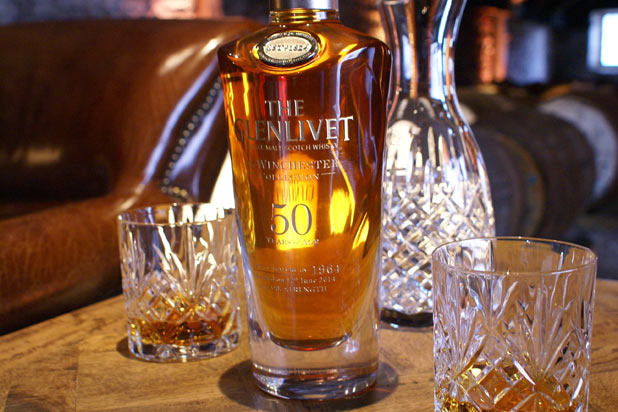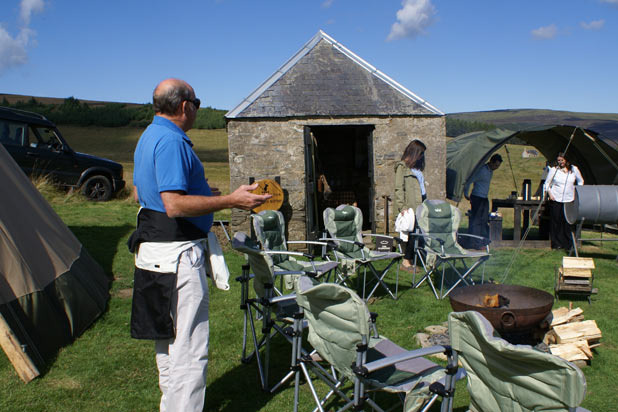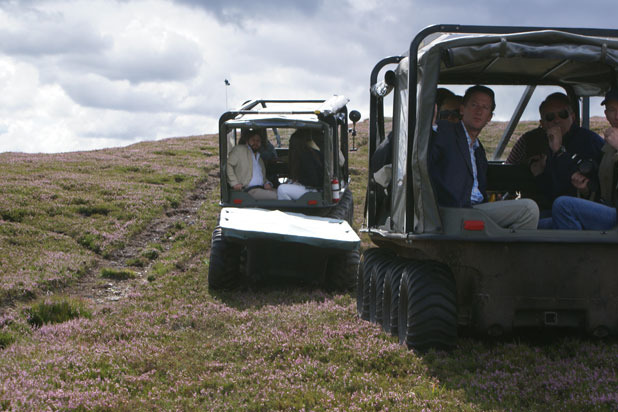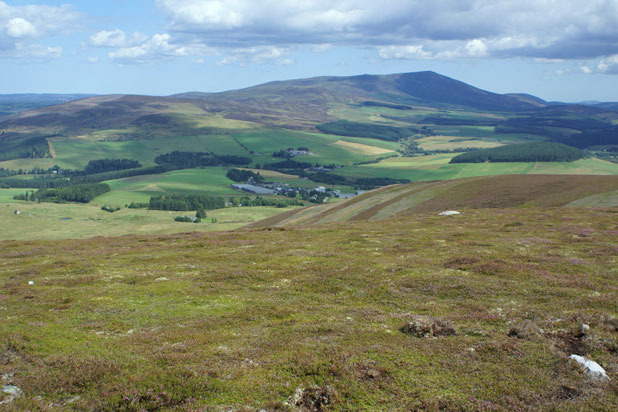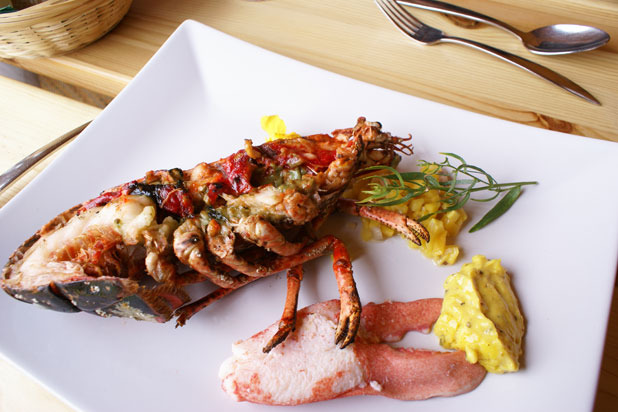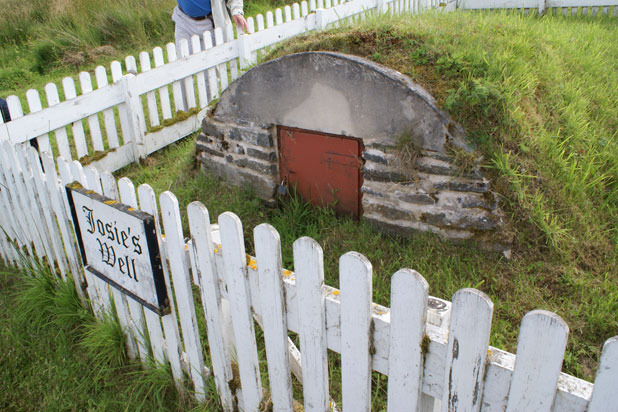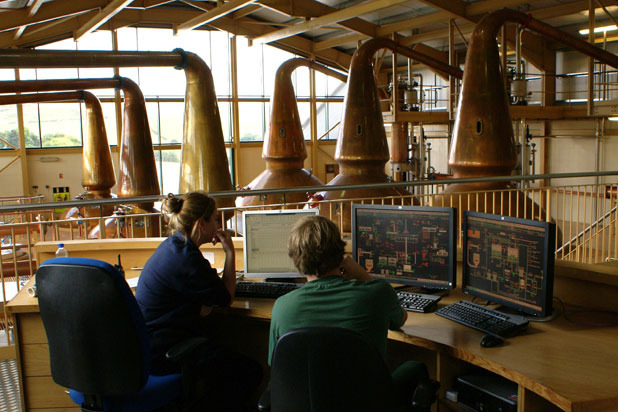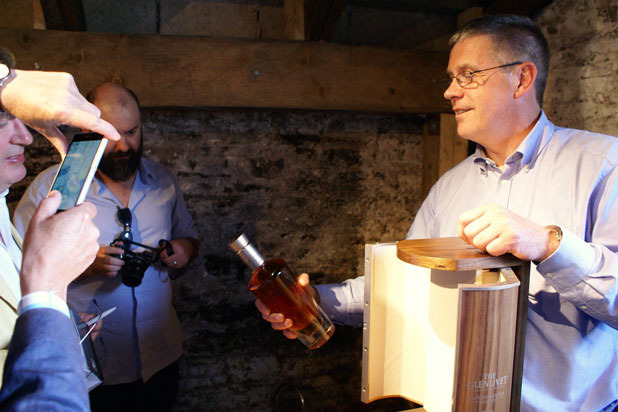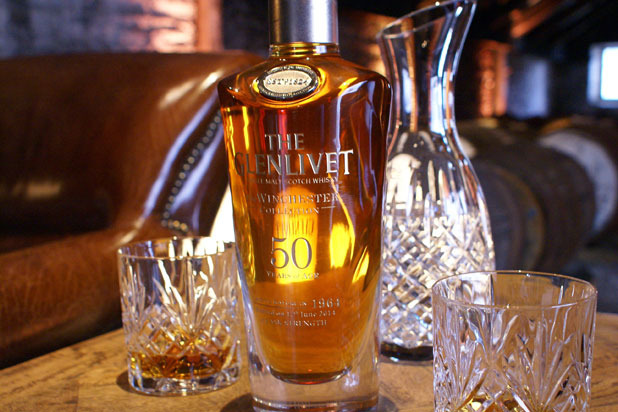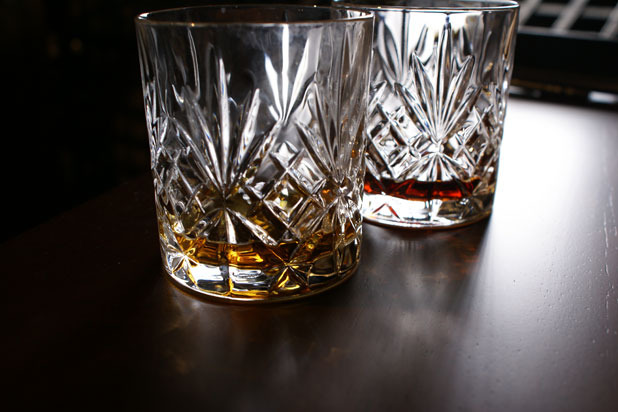In Search Of The $25,000 Scotch (Slideshow)
In Search of the $25,000 Scotch
The e-mail invitation was quite simple: Would I be interested in tasting Glenlivet's new $25,000, 50-year-old Scotch? And would I mind coming to Glenlivet's lair in the braes of northern Scotland to taste it? It was an invitation I couldn't refuse.
Thistle When You Get There
If there are thistles along the footpaths, I must be in Scotland. We — a small covey of writers from America and the mother country and I — set up shop for the duration at Meldrum House, an old country manor a few miles northwest of Aberdeen.
Getting Linked In
The next morning, we shake off the jet lag by hitting golf balls. These guys are from the London contingent. Scotch? So far I have seen none of the old stuff, although there is a bottle of Glenlivet 18-year in my room, and various Scotches for the ages are coming out at meals.
They Eat Haggis, Don’t They?
Since we are in Scotland, we must appreciate its innards beauty: haggis. We have dinner at a lovely country inn, Eat on the Green in Udny Green, where quite-tasty haggis balls are preceded by spoonsful of strawberries laced with honey whisky.
Bothy Base Camp
We are going to Glenlivet! The next morning we drive 50 miles west to a hidden valley where Glenlivet is born. As a diversionary tactic, we first set up base camp at Smugglers Bothy, a sort of Scotch-runner's pied-a-glen on the slopes of heather-encrusted Cairn Liath.
The Eagle Has Landed
For our amusement, a falconer shows us his aviary of birds of prey which have various adaptive skills that allow them to pull off all sorts of cunning maneuvers in flight. The show stopper, however, is this spectacularly American bird who does nothing but give us the eagle eye.
On Maneuvers
Speaking of prey, it is now time to stalk ours. We climb into a convoy of all-wheel-drive Argos (the name does sound familiar) for the trek up Cairn Liath, weaving a path through the blooming heather and scaring up grouse and wild hares along the way.
Worth the View
In the Livet Valley below us is The Glenlivet, which has been distilling whisky here since 1824 and is the No. 2 selling single malt Scotch in the world. Now owned by Pernod Ricard's Chivas Brothers, it is rightfully one of the most-respective spirits on the world.
Lobster Rules
Before going to the distillery, at the bothy, we gird our loins and fortify our stomachs with a spectacular lunch of local game, but the tipping point is delectable lobster from the nearby North Sea. Lunch conversation drifts towards, then skirts away from, the upcoming independence vote.
Josie’s Well
The Argos take us downhill to the famous Josie's Well, a short walk from the distillery. The Scots build their whiskies around pure water, and George Smith built the first Glenlivet distillery here to source water from this abundant natural spring.
Distillery Row
The distillery is a blend of modern and traditional technologies, including this computer-controlled array of gleaming copper stills. Master distiller Alan Winchester, who has held that position since 2009, lends his name to the new collection of 50-year-old whiskies.
Traditional Tech
Single-barrel aged Scotches are a combination of skill and foresight. Master distiller Bill Smith Grant began laying down single barrels in the 1960s that now form the genesis for the Winchester Collection, beginning with the 50-year-old 1964. This barrel of 1966 will be next.
The Unveiling
Winchester holds one of the 100 bottles produced from that one barrel. (Bottle #1 goes on sell in October at Harrods in London.) Collectors will scramble to buy the remaining 99; a few to drink, but most to add cachet to their caches and perhaps later sell at auction.
The Beauty Shot
The vital statistics: Scottish glass artists Nichola Burns and Brodie Nairn created the decanter design, which features a cairngorm stopper crafted by silversmith Richard Fox. The Scotch is a barely legal 42.3 percent ABV after its long sleep in a bourbon cask.
The $1,500 Shot
I get to taste both the 1964 (front) and the un-bottled 1966, darker because it was aged in a sherry cask. The 1964 50-year-old is sophisticated and superb — pineapple, pear honey, caramel, cracked grain and carbon — but still has a nice bite. The 1966? I'll get back to you in a couple of years.
